

Huntercombe, along with Willie Park Jr’s other ground breaking masterpiece, Sunningdale, opened in 1901 (incidentally his Notts design also opened in 1901) and helped spark a revolution in inland golf design. Walter Travis commented “I consider that Huntercombe is easily the best laid course that I have ever played over anywhere”. Harold Hilton agreed, “In links architecture his two great creations have been Sunningdale and Huntercombe and of the two I am distinctly inclined to look upon Huntercombe as the greater effort of the two”. Bernard Darwin was greatly impressed with the course and wrote “Although Huntercombe is still a comparatively young course, there is an agreeable quality about the golf that, for want of a better word, may be called, very respectfully, old-fashioned. At any rate, the golf of Huntercombe has a very engaging character of its own; it is good without being too strenuous for the reasonably light-hearted player. Yet this cheerful person must not imagine the disaster cannot overtake him.”
See the link for the full Golf Magazine article that Travis wrote concerning his 1901 trip to Britain.
https://walterjtravissociety.files.wordpress.com/2011/09/1901-impressions-of-british-golf-from-golf-mag118.pdfLike most early 20th century designs, trees have invaded what was originally open land, though Park Jr would certainly recognize much of his handiwork if he were to walk the course today. As one would expect from an older course which has had few revisions, Huntercombe is on the short side at approximately 6300 yards. However, originally the course was much longer; several holes have lost yardage (according to old scorecards and maps), but in some cases the reasons for the loss of yardage aren't clear. It should be mentioned that Sunningdale's Old Course was also considered to be very long. Indeed, Bernard Darwin thought the introduction of the Haskell was a great benefit to the course. Whatever the reasons for the yardage changes, they seem to have happened quite early in the evolution of Huntercombe and that it is likely Park Jr carried out the work.
1946 Aerial

Huntercombe stands nearly 700 feet above sea level, one of the highest points in the Chilterns and it is easy to imagine how wind would have played a significant role in stiffening the challenge. The 13 remaining bunkers are in the main placed to offer the golfer a choice of playing heroically or safely. In addition to bunkers there are hollows dotted about the course which greatly effect the decision making of golfers. Although, some of these hollows originally contained sand. Not unusually, a road, The Ridgeway, one of the oldest roadways in Europe, divides the course. Unfortunately, the increase in traffic in recent years has precipitated the club to alter the 6
th by planting trees down the right and filling in one of the hollows on the left side of the fairway.
Despite the critical success of the design, due to financial difficulties caused by the failure of the planned real estate development, Park lost a substantial amount of money. However, high profile work continued to come Park’s way. His talents were further utilized for many more marquee designs; amongst which were Formby, West Hill and Worplesdon. With the exception of the loss of a handful of key bunkers, ironically, the early financial difficulties Huntercombe suffered may be the very reason the course is fairly well preserved. Unlike Sunningdale, Huntercombe is just far enough removed from London to have effectively become an historical footnote in golf architecture. Despite two holes which are All England candidates (#s 2 & 3), Huntercombe fails to make any modern best of lists. More is the pity because Huntercombe exemplifies concepts which were previously the domain of links golf. Variety, use of natural and man made landforms and strategic merit are features which made the course justly famous over 100 years ago and continue to delight members and visitors alike today.
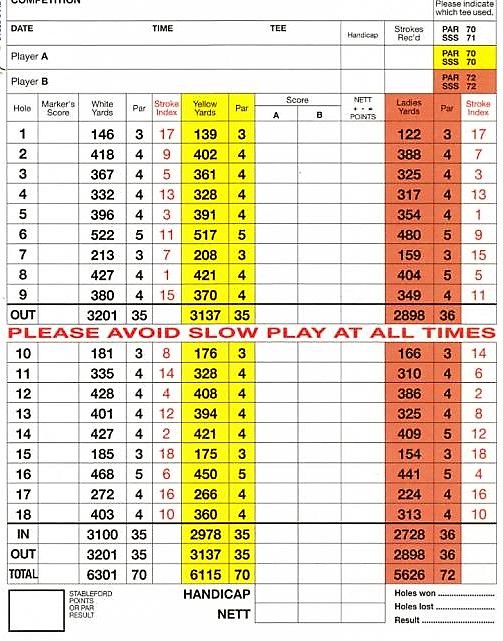
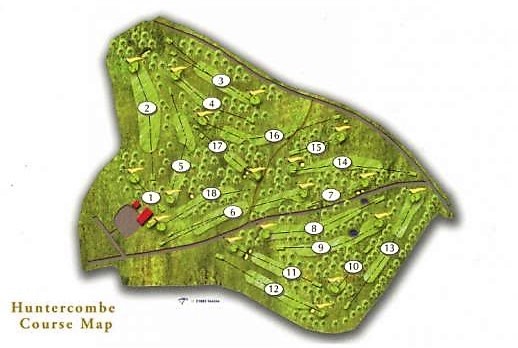
When the 1st was originally designed (as the 6th) the tee was meant to be where the shoe cleaner is on the far side of the clubhouse. When looking at the green this tee location makes sense as play would have been between hollows to a green moving in a reverse wave as seen on other holes at Huntercombe. Alas, at the time Park didn't own the land (perhaps he thought it was included in the purchase) which now contains the house and putting green. Today the hole is still very good if quite a bit shorter and playing over a hollow. Below is Mr Sheehy and the tricky green running away from play.

#2!! Originally the depression and mounding was the left boundary of the hole until the club rented and eventually purchased the left side of fairway corridor. This may not be an original green as it may be the case that the green was much further down the hill, well behind the 3rd tee. Although, the gulley feeding into the hard front to back sloping green is a stroke of genius.
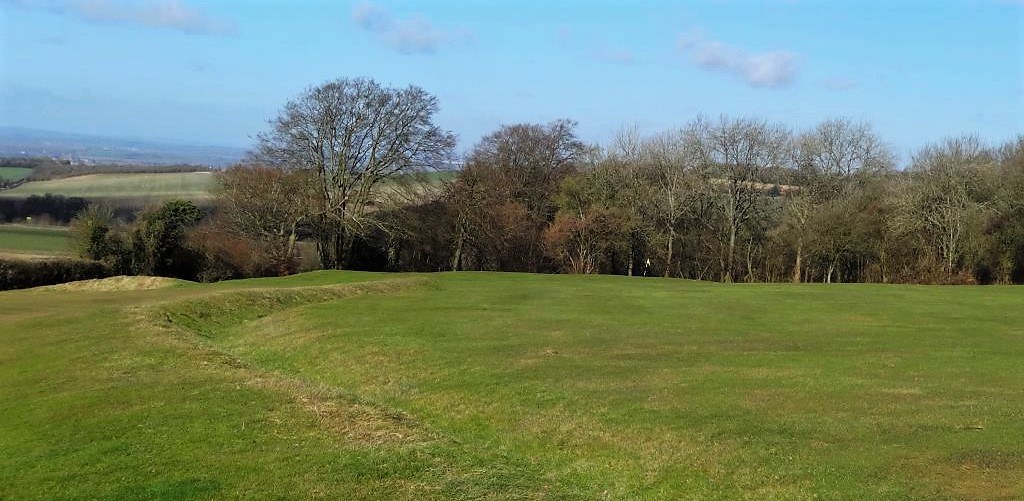
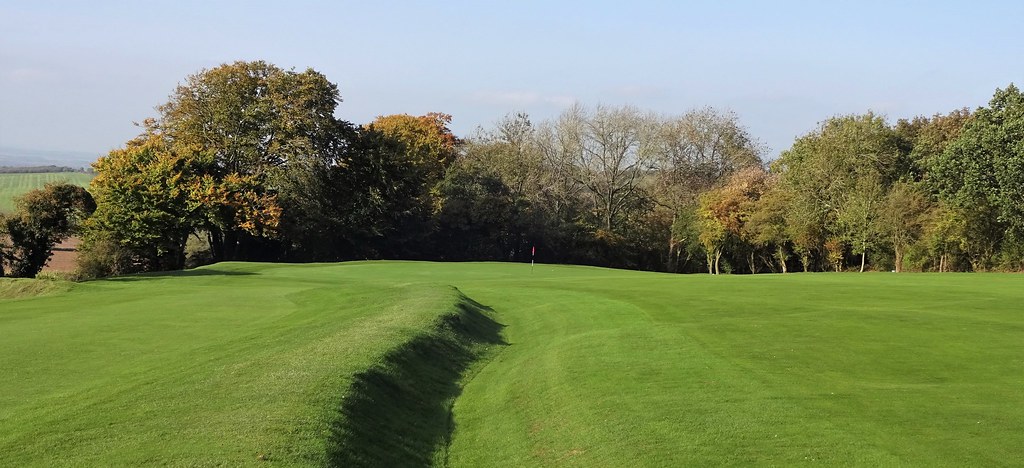
#3!! Boony on the left. I noticed the green was recently extended when I played in 2024.
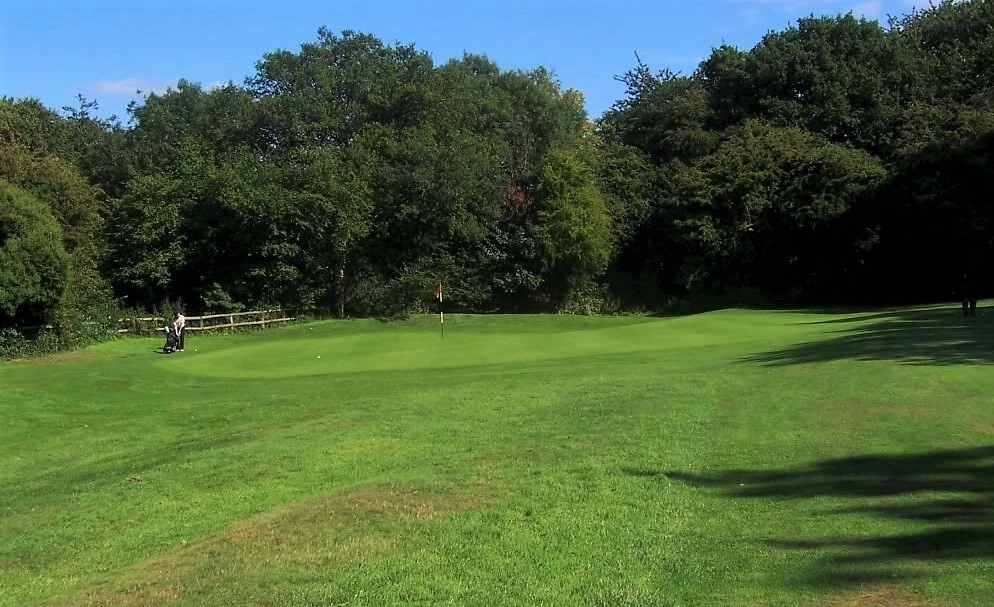
4th!
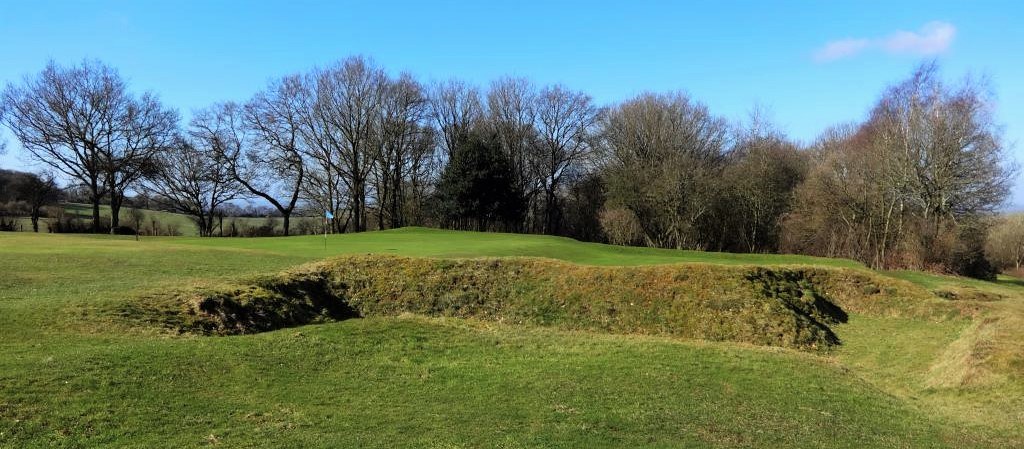
There is an area of short grass between the hollow and left side of the green which I reckon should be part of the putting surface.

It isn't until the 5th that we come across a bunker! This hole was also part of the yardage contraction. The club has recently built a tee a bit further behind the main tee to recapture some of the original length. Half the holes on the course are bereft of sand and only one hole has more than two bunkers. While the hollows are important features, many of the lost centreline bunkers were fairly large and would have made for a more thrilling experience than what is in the ground today. Incidentally, the map also shows how trees have encroached on the property. See the link to the excellent site created by Mark Bourgeois.
http://golfcoursehistories.com/HC.htmlWe can see the narrowing effect which the trees on the right create for the 6th. For the most part this is a necessary evil to protect the road flanking the hole. IMO, the road would be better protected if the hole were turned into a dogleg right. This would necessitate tree removal up the left and at least a partial shared fairway with the 18th.
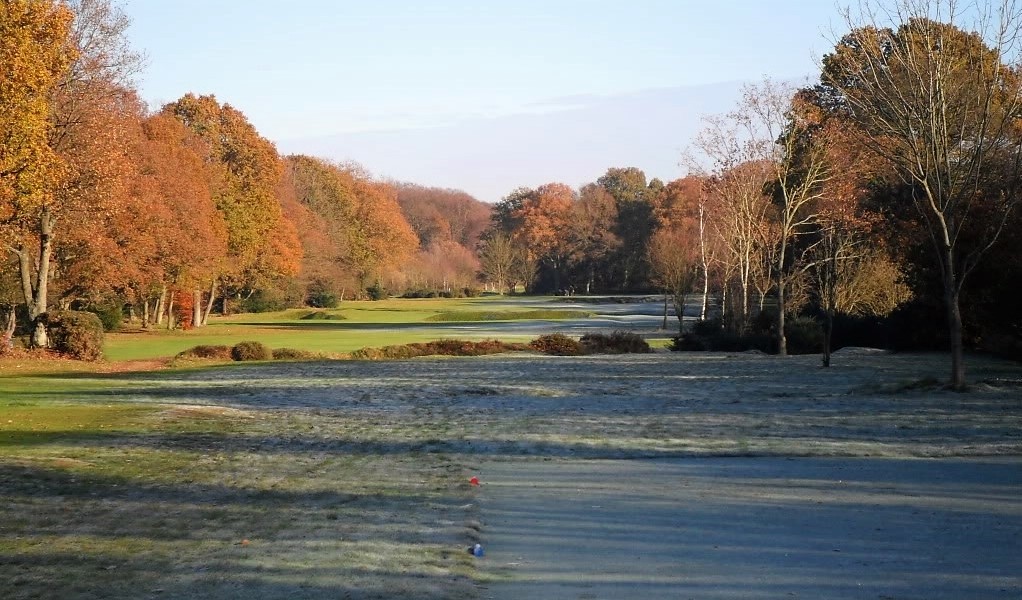
The hollows were once filled with sand.
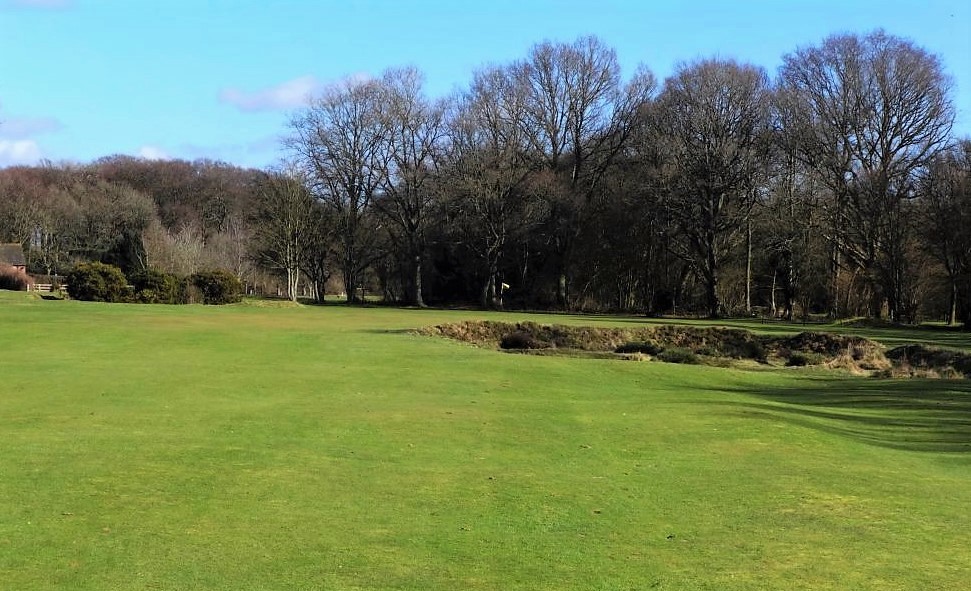
The 7th is a mess on the tee with trees pointlessly encroaching and casting shadows from the left. Also, behind the green half the trees could be cleared out to increase sunlight. For all the tree problems, this is a good longish short hole.

Extending the green forward 15 yards between the mounds would add quite a bit of zest to this hole.
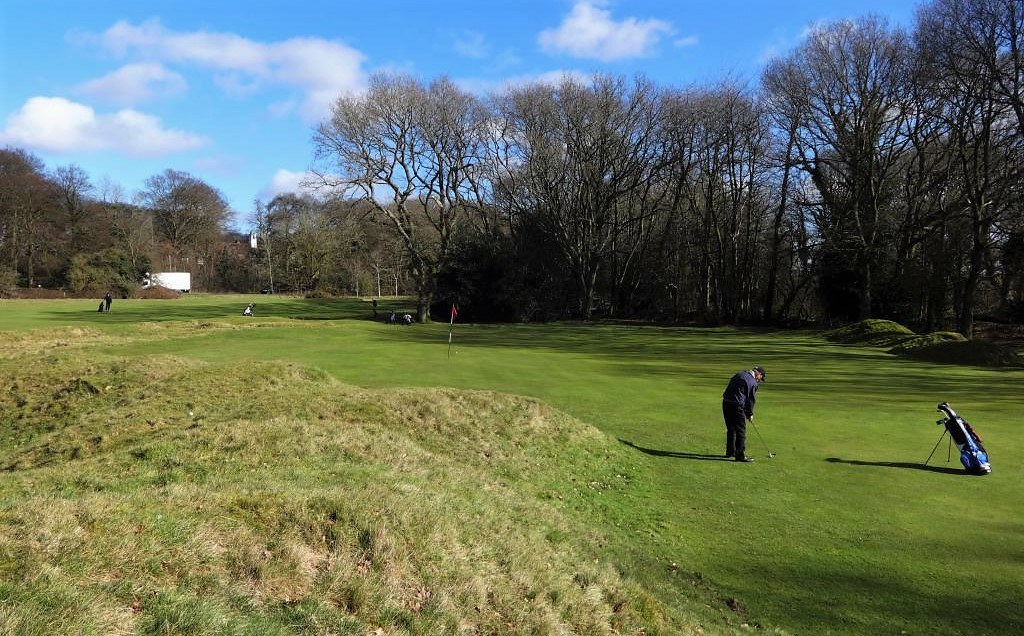
One of Huntercombe's few long, testing 4s, the 8th is marked for its creative two-tier green which rises in a rounded fashion rather than the abrupt levels often seen. It is thought Park Jr modelled this hole after Musselburgh's famous Pandy (Pandemonium Bunker) hole; which he would have known very well as it was Park Jr's home green. Orginally there was a large cross bunker to be carried in front of the tee, presumably this was the Pandy. Just shy of the green is a shallow hollow which once housed two centreline bunkers.
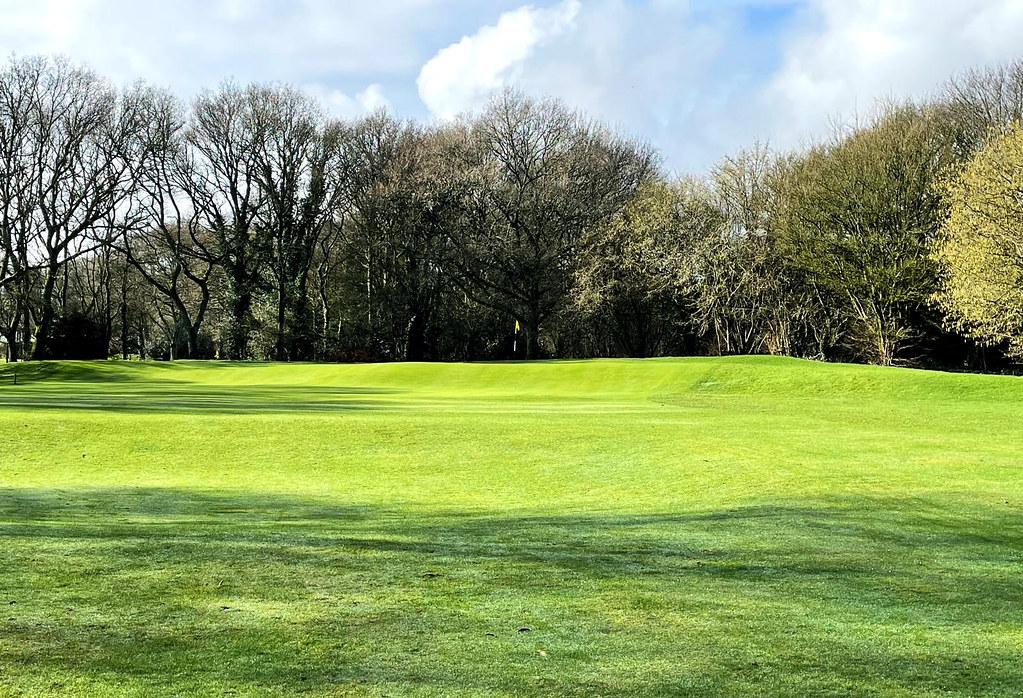
The back tier not long after opening.
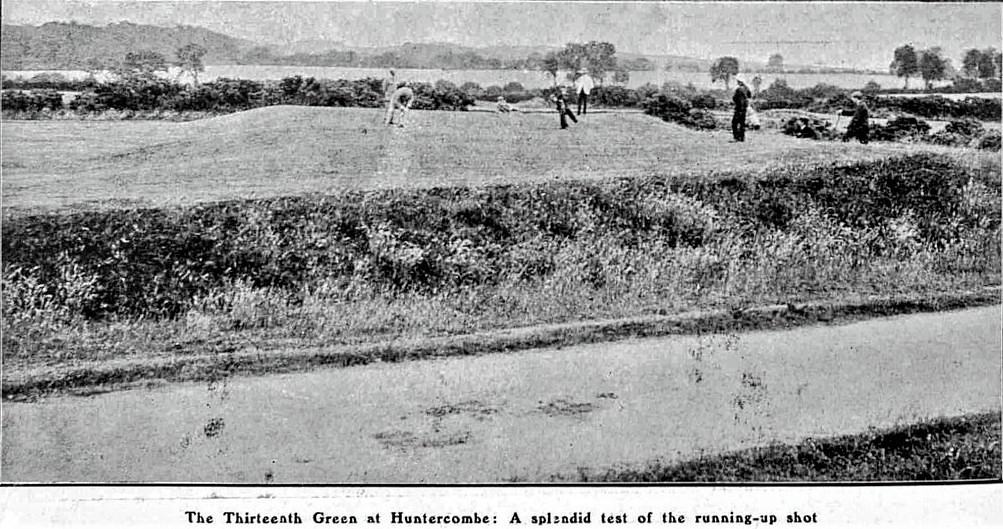
9 is a canny, shortish two-shotter legging hard left. Very reminiscent of Simpson, a large hollow is shy of the green.

The 10th is yet another fine par 3 with a sole fronting bunker and a runaway green for defense. The cross bunkers on the 11th come into play for bigger hitters, but this hole is really more about accuracy.

12 is a excellent par 4 whose green is protected much like the 10th with a lone centreline bunker. This photo of the 13th is a good representation of the many seamless fairway to green transitions which make depth perception difficult to calculate.
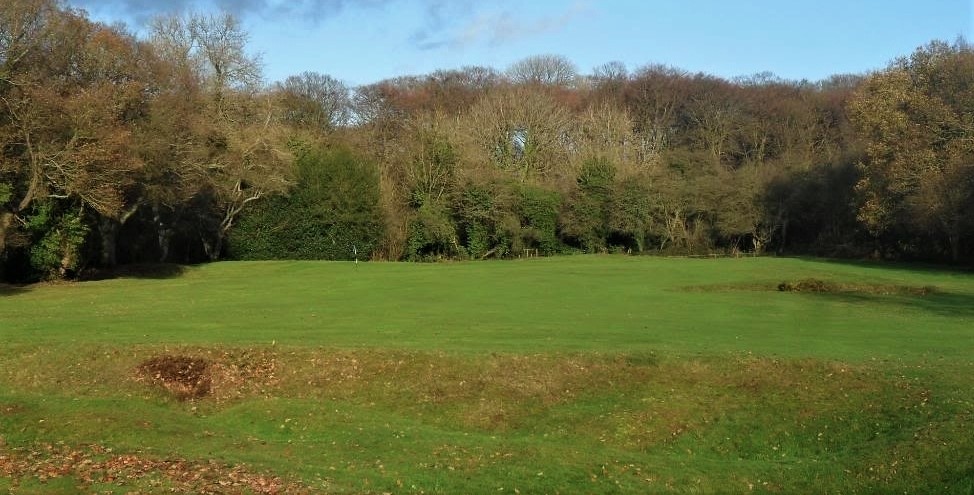
The ever-present hollows are often the main talking point of the Willie Park Jr's design, but it is the compelling greens which are the real star of the show. Due to the greens being at grade level (except for 17!) it is beyond my powers to capture the brilliant subtleties.
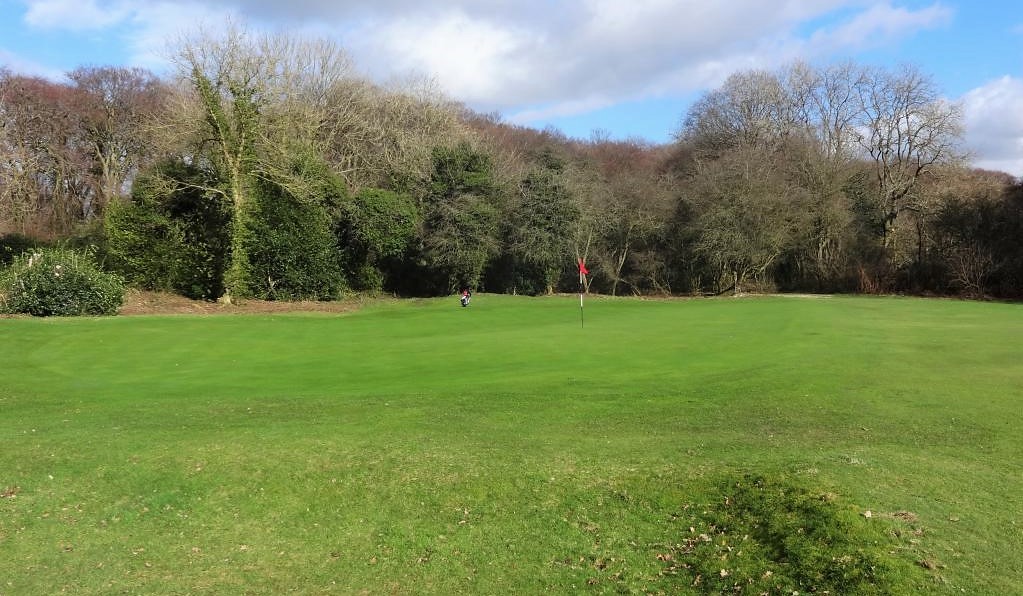
The 14th would have been a very difficult starting hole when William Morris was the owner of Huntercombe. The old clubhouse was across the A 4130 (Oxford to Henley on Thames road) and is now a National Trust and
shrine to William Morris.

The house was replaced by the current house in 1963. Obviously, the new house necessitated a change in the hole numbering and it is at this time I think the current par 3 first was altered to make way for the house. In recent years, OOB stakes were placed along the right side of the 14th fairway to protect the house which is in range of flat bellies. Below is a photo when there weren't trees on the left!

15 is a lovely par 3 played to a bowl green. The final par 5, #16 turns aggressively right along the property boundary.This hole has changed dramatically. The OoB has been moved well left and several hollows were built along the course boundary line sometime just prior Covid. The hole is now a clear dogleg right. Previously the ambitious players aimed where it is now OoB and hoped to skirt the centreline hollow. That hollow remains, but can no longer be seen from the tee...it is blocked out by the new hollows...which are very unforgiving.


The dimunitive 17th, but its 266 yards is not the reason this hole stands out!

An old photo of the waste area short of 18 green, when many of the hollows contained sand.

Most will disagree with me, but I believe Huntercombe is a strong candidate for an English first tier course. The only drawback of the course is the over-abundance of trees which try their best to transform Huntercombe into a routine parkland course. Indeed, the presence of so many oaks is thought to be due to Lady Nuffield refusing to allow seedlings to be uprooted. In recent years there has been traction within the club to clear out some trees; the first and 17th being great examples of the tree work. There are still a ton of trees which can be removed, but despite the over-abundance of lumber I am immensely impressed that this fairly flat property manages to hold my attention for the entire round. Between front to back and a few crazy greens and the relationship between the hollows in the fairways and the slopes around the greens, there is a lot to ponder. Every hole has something about it which requires a bit of thought even if its an afterthought. 2024
There has been some suggestion that Willie Park Jr's Huntercombe design didn't have a great impact on the world of golf design. Yes, Huntercombe quickly became a backwater due to the financial failure of the project and eventual purchase of the property by Lord Nuffield. However, it can be no accident that within five years of the club's foundation that five would be well known architects became members.
Stuart Paton was a member when he initiated the famous changes at Woking with J Low.
CK Hutchison later became a well known figure in the business as a partner with
Guy Campbell (was also an early member) and SV Hotchkin; incidentally, both Paton and Hutchison were among the first club captains.
Hugh Alison was a long time partner of HS Colt and creator of many courses on his own in Japan and the US.
JF Abercromby, creator and benevolent dictator of Addington would later join forces with A Croome, Fowler and T Simpson with Liphook being Croome's only solo effort. Indeed,
HS Colt himself became a member in 1924! The direct and indirect links between these architects reads like a whos who of original inland strategic design! In later years
Ken Cotton (partner with Frank Pennink and later Donald Steel) was a member and it is likely that he had some input when the new clubhouse was built. It is also known that
CB Macdonald visited Huntercombe on 9 May 1906 as a guest of CK Hutchison. He signed his name and Garden City, USA, which is interesting for fans of W Travis.

If one finds himself in the London/Oxford area strongly consider following in the footsteps of the famous lady magician and one-club golfer, Gloria Minoprio. She started her golfing career at Huntercombe by taking lessons from then professional Jim Morris. For anyone thinking of touring the inland courses of England I can think of few better places to start than Huntercombe. 2024
Ms Minoprio teeing off on Burnham & Berrow's 1st.

See Ran's Review.
http://golfclubatlas.com/courses-by-country/england/huntercombe-golf-club/Ciao